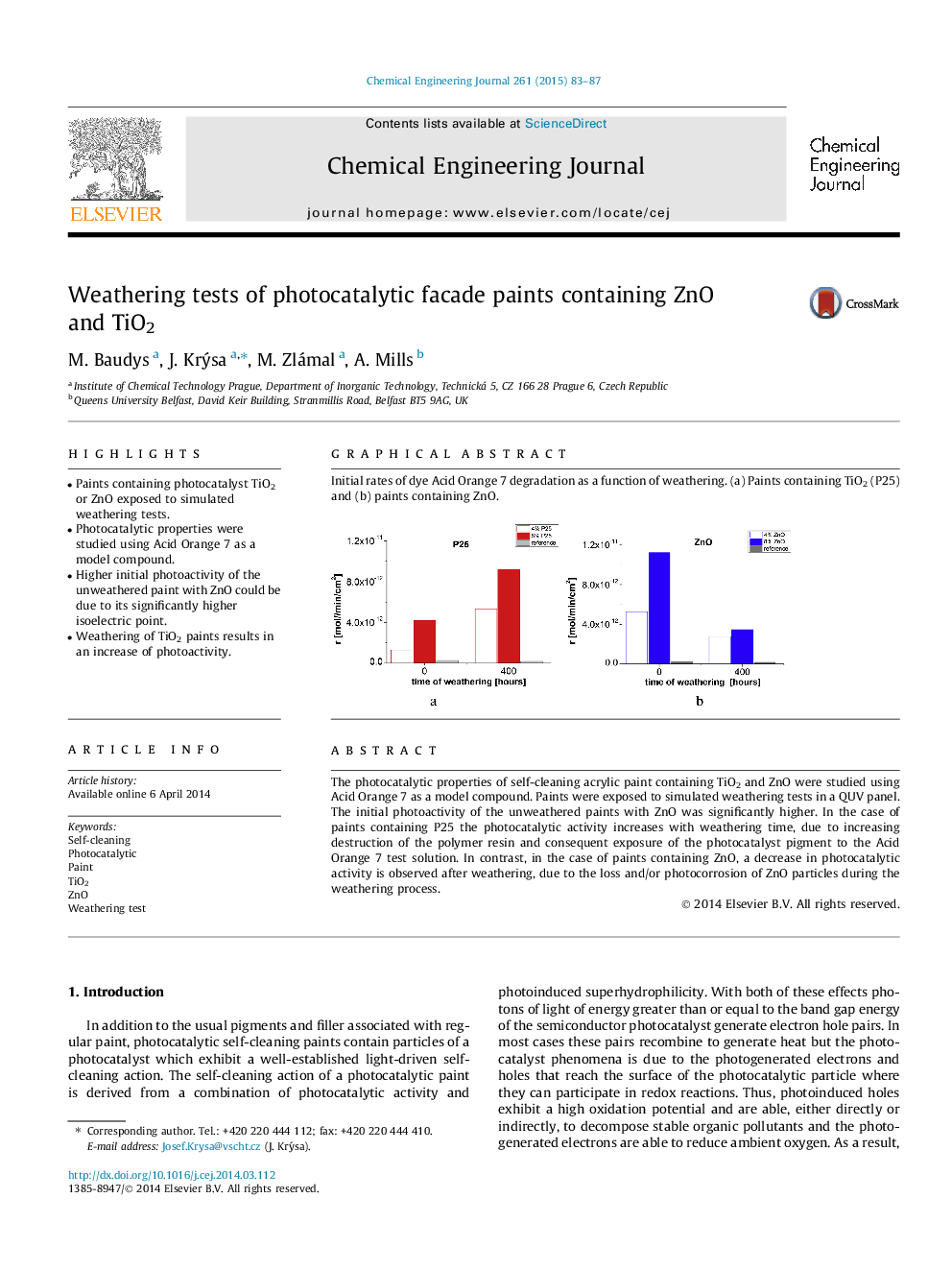| Article ID | Journal | Published Year | Pages | File Type |
|---|---|---|---|---|
| 146931 | Chemical Engineering Journal | 2015 | 5 Pages |
•Paints containing photocatalyst TiO2 or ZnO exposed to simulated weathering tests.•Photocatalytic properties were studied using Acid Orange 7 as a model compound.•Higher initial photoactivity of the unweathered paint with ZnO could be due to its significantly higher isoelectric point.•Weathering of TiO2 paints results in an increase of photoactivity.
The photocatalytic properties of self-cleaning acrylic paint containing TiO2 and ZnO were studied using Acid Orange 7 as a model compound. Paints were exposed to simulated weathering tests in a QUV panel. The initial photoactivity of the unweathered paints with ZnO was significantly higher. In the case of paints containing P25 the photocatalytic activity increases with weathering time, due to increasing destruction of the polymer resin and consequent exposure of the photocatalyst pigment to the Acid Orange 7 test solution. In contrast, in the case of paints containing ZnO, a decrease in photocatalytic activity is observed after weathering, due to the loss and/or photocorrosion of ZnO particles during the weathering process.
Graphical abstractInitial rates of dye Acid Orange 7 degradation as a function of weathering. (a) Paints containing TiO2 (P25) and (b) paints containing ZnO.Figure optionsDownload full-size imageDownload as PowerPoint slide
